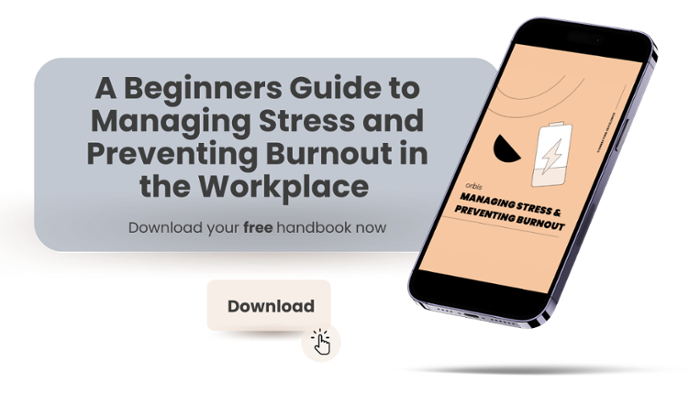-1.png)
Burnout is something that we will all deal with (or have dealt with) at some point in our lives. The truth is it can creep up on us without us realising it - thus making it harder to deal with and overcome in the long term. Leaders and business owners have a responsibility for their employees, one of them is ensuring that burnout can be mitigated at the root cause (or stopped completely before it’s too late).
Due to the implementation of hybrid or remote working, there has been an increase in burnout among employees. One example is the difficulty of delineating work from home life. With 24/7 connectivity and no commute, it can be challenging to separate the two. Many people find themselves working late into the evening and on weekends. Add in reduced staff and increased workloads, and burnout quickly becomes a reality: A Deloitte survey found that 77 per cent of workers have experienced burnout.
Here are our four key steps that leaders can take to mitigate burnout within their teams
Don’t overload your employees
We have all had that “star” team member: the person who always completes their day to the highest standard, is a great team player, technically proficient and a pleasure to work with. But, after time - you notice that their effort levels seem to plateau, their morale is low and they’re struggling with the simplest tasks.
There is a fine line between pushing your employees and overloading them, and unfortunately, it’s usually the best performers who are susceptible to burnout because they take too much on. It’s your job as a leader to stop this.
Even if employees are asking for more work, or they are overloading themselves with unnecessary tasks - it’s down to you to keep tabs on what your teams are doing and in essence, put boundaries in place to ensure that the workload is manageable. Particularly junior employees who are in the early stages of their careers aren’t going to be as self-aware to spot burnout in themselves because it’s their first time in this working environment.
So, you have to take it upon yourself to manage everybody’s workload and ensure that it’s fair, manageable, and still offers a steady level of challenge to keep them engaged.
Plan ahead with your team
Team cohesiveness is crucial - especially if you know that you have a busy period upcoming. Sitting down and forecasting projects/responsibilities with your team will enable you to see potential tough periods arising in advance, which will then give you insight into how you can cope.
Equally, planning can only do you good. That way, everybody is aligned, expectations have been set and there are no hidden issues or confusion on workload. Whether you do this on a monthly or quarterly basis is up to you, but you need to ensure that your planning enables everybody across the team to have complete clarity on what is expected of them. It also then gives your team members a window to raise any questions/issues that they may have in advance.
Check-in regularly
Whether it’s team meetings or one on one chats, checking in and showing genuine interest in your employees’ well-being as well as their workload is crucial.
Not only will regular check-ins enable you to build trust and respect as a leader, but it will also create a safe space for open conversation if an employee is struggling with their workload. It is impossible for you to mitigate burnout for everybody all of the time - we all have different tolerance levels and external factors (such as our personal lives) can affect how we perform on a day-to-day basis. All you can do as a leader is your best - and regular check-ins form a part of this.
Encourage your company to have mental health and well-being strategies in place
Whether you’re a business owner or a leader within it, creating a robust mental health and wellbeing strategy is beneficial for mitigating burnout for two key reasons:
#1 You’re creating awareness within your organisation
Recognising that burnout can happen even in the healthiest of work environments is important. It shows employees that it’s OK to feel overwhelmed and it’s OK to feel stressed. Awareness is the first step! It will also alert other leaders to be mindful of burnout and the aforementioned points (checking in and managing workload) so their teams can run more fluidly.
#2 It should be a standard, not a “bonus”
Looking after your employees’ mental health and well-being shouldn’t be seen as a benefit or a bonus that your company offers. It should be a standard that sets the correct precedent and should be measured just as much as performance and profits.
Having a mental health and well-being strategy doesn’t have to cost you the earth, either. It’s a case of creating the right policies to fit your business’ size and ensuring that every employee is aware of what support they will receive. It may be taking “mental health days” as bonus annual leave, or it could be wellbeing days or access to company-expensed therapy or gym memberships. There are so many options available - and it doesn’t need to be over-complicated.



